Use real-life examples and historical information to help students get to grips with the structure and composition of the Earth
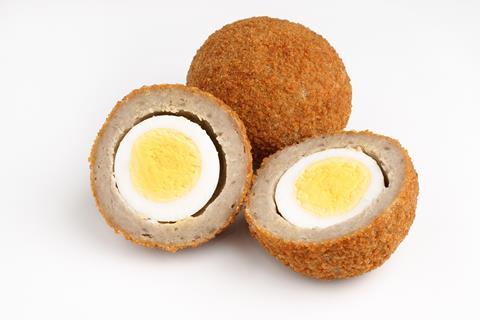
In the early 19th century, John Cleves Symmes Jr, a US army captain, declared that the Earth was comprised of multiple hollow spheres stacked inside each other like a traditional Russian nesting doll. He said that each of these layers was habitable and could be accessed through an opening at the north and south poles. But, although, he went so far as to seek ‘100 brave companions’ to accompany him on an expedition to the north pole to find an entry point, he never managed to prove his hollow Earth theory.
Cleves Symmes wasn’t the first to suggest such an idea, although he did claim not to have read any of the earlier work. In the late 17th century, astronomer Edmond Halley proposed that the Earth was a hollow ball of solid matter containing within it two concentric spheres and a core. Like Cleves Symmes, Halley suggested there was light and an atmosphere between the layers that supported life. He did, however, omit the mention of any ‘doors’.

Halley’s theory had, in fact, already been disproved before Cleves Symmes’ time. In the late 18th century, astronomer Nevil Maskelyne conducted an experiment to measure the mean density of the Earth. This took place at the Schiehallion mountain in the Scottish Highlands and found that the Earth was far too dense to be hollow.
But while Cleves Symmes and Halley were incorrect about many things, their belief that the Earth was comprised of multiple concentric spheres is not too far off our current understanding of the structure of our planet.
What students need to know
- The Earth is almost a sphere and made of three main layers: the crust, the mantle and the core.
- The Earth’s crust is less dense than the mantle beneath it and is made up of a mixture of minerals.
- Our current understanding of the internal structure of the Earth is a model based on analysis of how shock waves generated from earthquakes pass through its structure.
Ideas for your classroom
There is much overlap in this topic with geography. So, before teaching the topic it is therefore a good idea to liaise with the geography department to check for commonality.
Develop scientific literacy
Developing students’ scientific vocabulary and supporting pupils to read and write about science is well recognised as a key aspect of good science teaching. This DART exercise (Directed Activity Related to Text) by the TeachIt Geography team is an excellent introduction to the topic. Students analyse a piece of text and use the information provided to construct a diagram of the Earth’s structure.
Developing students’ scientific vocabulary and supporting pupils to read and write about science is well recognised as a key aspect of good science teaching. This DART exercise (Directed Activity Related to Text) by the TeachIt Geography team is an excellent introduction to the topic (bit.ly/3nQ9TzF). Students analyse a piece of text and use the information provided to construct a diagram of the Earth’s structure.
Draw to scale
The relative thickness of each of the Earth’s layers can be difficult to visualise from the numbers alone. Students can draw a scale diagram using the downloadable resource (below) to reveal the large differences.
Download this
Use this worksheet to help students visualise the structure of the Earth and its atmosphere, as well as boost their confidence with plotting information on scales. Students are given measurements of the various segments of the Earth’s structure and provided with a scale diagram on which to plot them. Download the worksheet as MS Word or pdf.
Download a worksheet to help students visualise the structure of the Earth and its atmosphere from the Education in Chemistry website. Students are given measurements of the various segments of the Earth’s structure and provided with a scale diagram on which to plot them: rsc.li/2J7Yf4l
Explore 3D models
Scientists use models all the time to help develop and share ideas that are otherwise inaccessible. Talking about models of the Earth’s structure can help students develop their ability to reason like a scientist.
Inquisitive students will often ask: ‘How do we know what’s inside the Earth when we can’t actually see inside?’ The deepest humans have ever ‘seen’ down into the Earth is 12.262 km – through an approximately 23-centimetre-wide hole named the Kola superdeep borehole in Russia. The drilling of the hole started in 1970 and ceased in 1992, when the temperature inside became too hot for the equipment. While impressive, the depth it reached fell significantly short of the 6378 km radius of the Earth.
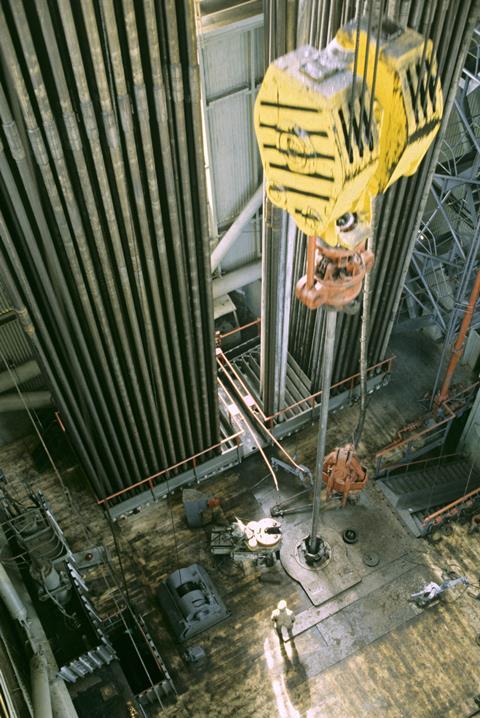
Our current understanding of Earth’s structure, therefore, stems from careful analysis of shock waves from earthquakes and the time it takes for these waves to reach different areas on the Earth’s surface. This, and other experiments, have enabled scientists to produce our current model of the inside of Earth.
Ask students to compare a 3D model of the Earth with the much simpler one of a Scotch egg. How are they similar? What are the limitations of each model? By giving students the opportunity to directly discuss models and consider why they are used, students will develop their ability to reason like a scientist.
Make links with other topics
The Earth’s lithosphere (the rigid outer layer consisting of the Earth’s crust and the part of the mantle just below it) is made up of a mixture of minerals, which can consist of elements or of chemical compounds. Use this as an opportunity to revisit prior learning on elements and compounds.
Many of the metals that the students are familiar with are extracted from metal ores found within the Earth’s crust. Students can extract iron from iron oxide on a small scale in this practical activity in which the reaction is performed on a match head.
Many of the metals that the students are familiar with are extracted from metal ores found within the Earth’s crust. Students can extract iron from iron oxide on a small scale in this practical activity (rsc.li/371AwLa) in which the reaction is performed on a match head.
Common misconceptions
A persistent misconception across all age groups is that the Earth’s mantle is semi-liquid. This confusion stems from volcanic eruptions and the liquid nature of magma. In reality, the mantle is mostly made of solid rock. Only a tiny proportion is liquid, and even then only in specific regions such as spreading plate boundaries, subduction zones and hot spots.
Another point of confusion surrounds the different densities of the Earth’s layers. Because the majority of rocks sink in water, students often believe that the Earth’s crust must be both very dense and denser than the mantle beneath it. You can use this simple experiment involving an orange that can be used to model the different densities of the Earth’s layers and help to overcome this misconception. An orange, like the Earth, has a relatively dense centre and a much less dense outer layer.
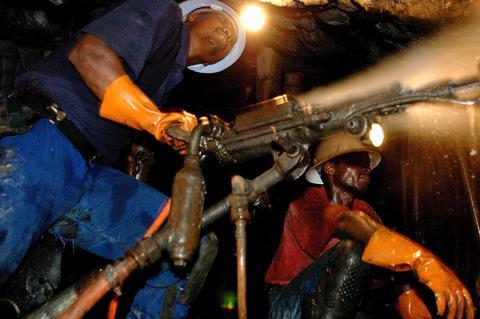
A third persistent earth science misconception regards the temperature inside the Earth. This confusion originates from visits to caves; students will recall having stepped inside one on a warm day and finding it cool. This can lead students to believe that it is colder inside the Earth because the sun cannot reach it. The Mponeng gold mine in South Africa is the deepest mine in the world and extends up to four kilometres below the Earth’s surface. In the deepest parts of the mine, rock temperatures reach up to 60ºC and air conditioning is required for the miners to work safely. Use this as an example to help students contextualise the known increase in temperature with proximity to the Earth’s core.
For further guidance and resources to help identify student misconceptions, use the BEST resources on dynamic Earth.
A persistent misconception across all age groups is that the Earth’s mantle is semi-liquid. This confusion stems from volcanic eruptions and the liquid nature of magma. In reality, the mantle is mostly made of solid rock. Only a tiny proportion is liquid, and even then only in specific regions such as spreading plate boundaries, subduction zones and hot spots.
Another point of confusion surrounds the different densities of the Earth’s layers. Because the majority of rocks sink in water, students often believe that the Earth’s crust must be both very dense and denser than the mantle beneath it. You can use a simple experiment involving an orange that can be used to model the different densities of the Earth’s layers and help to overcome this misconception (bit.ly/33bPnSd). An orange, like the Earth, has a relatively dense centre and a much less dense outer layer.
A third persistent earth science misconception regards the temperature inside the Earth. This confusion originates from visits to caves, students will recall having stepped inside one on a warm day and finding it cool. This can lead students to believe that it is colder inside the Earth because the sun cannot reach it. The Mponeng gold mine in South Africa is the deepest mine in the world and extends up to four kilometres below the Earth’s surface. In the deepest parts of the mine, rock temperatures reach up to 60ºC and air conditioning is required for the miners to work safely. Use this as an example to help students contextualise the known increase in temperature with proximity to the Earth’s core.
For further guidance and resources to help identify student misconceptions, use the BEST resources on dynamic Earth (bit.ly/3pUavpH).
Formative assessment
There are several opportunities for extended writing in this topic. As an example, students can write a narrative describing an imaginary journey to the centre of the Earth.
For an engaging plenary, ask students to watch this first look teaser to the Fox Studios film Ice Age 4 and identify two pieces of correct science and two pieces that are incorrect.
For an engaging plenary, ask students to watch the first look teaser to the Fox Studios film Ice Age 4 (youtu.be/Hf74Sp0Xe6Q) and identify two pieces of correct science and two pieces that are incorrect.
Progression to 14–16
Although students don’t formally revisit the structure of the Earth in science at 14–16, they build on the knowledge gained when looking in more detail at the numerous resources we obtain from Earth.
Take home points
- The Earth is almost a sphere made of three main layers: the crust, the mantle and the core.
- It is common for students to believe that the mantle is a liquid owing to the liquid nature of magma that erupts from volcanoes. Directly address this misconception when introducing the structure of the Earth.
- To help students visualise the Earth’s structure and the relative depths of the different layers, make models and compare them to our current understanding. You can also use the Earth’s structure poster and resources.
- Use the composition of the Earth’s crust to make links with prior learning on elements and compounds, as well as link to later topics on extracting metals and Earth’s resources.
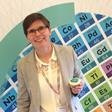






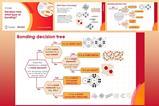






No comments yet